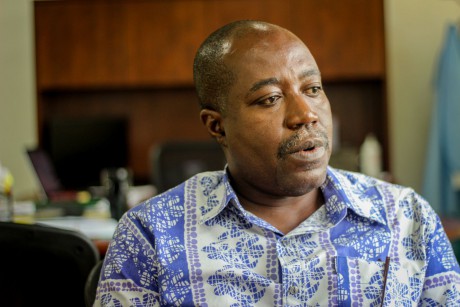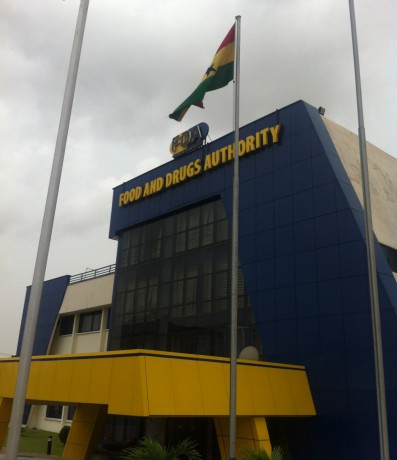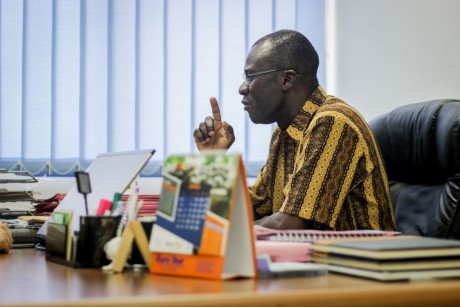Ditches
Why does counterfeit medicine exist?
The sun accentuates the stench at the intersection of Mission Street with one of the main canals of the city, which crosses the districts of Cantonments and Osu to scatter itself in the Gulf of Guinea. In Accra there are almost not sidewalks; instead, on both sides of the road, there are ditches. With a depth of between a handspan and more than a meter, these ditches are open or covered with planks or bars. On top of them, people live, buy, sell, fry chicken in palm oil on hot coal, or wash clothes. Through them, run the residues of the inhabitants, oily-flowing over algae. The waste gathers in larger trenches and finally accumulates into wide canals like this, around green water, clouds of insects and some hungry egrets.
The structure of cities like Accra is a lure for diseases like cholera, which in last year’s epidemic infected nearly 29,000 people in Ghana; or everlasting malaria, endemic for centuries in sub-Saharan Africa, where 90% of malaria deaths worldwide occur.

By mid-afternoon, without prior notice, the whole town goes dark. It is the Dumsor, derived from Twi dialect, which is how the neighbors call the persistent power cuts of up to more than twelve hours that the country has been suffering for years almost daily. It is then when the roar of the diesel generators begins, providing power to some housing complexes, shops or restaurants. Just a few street lamps, connected to these generators, survive Dumsor, which accelerates and increases the darkness where mosquitoes reign.
Many people have developed some immunity to Plasmodium falciparum, the protozoan that causes malaria. They get the disease several times a year, albeit almost asymptomatically. Not so with children, for whom malaria is, in Ghana, the leading cause of mortality in children under five. Data from the World Health Organization (WHO) indicate that cases have doubled since measurements began in 2004. Then, there were recorded less than 30 cases per thousand inhabitants. In 2013 this number raised to 60 and, a year earlier, they registered the record number of 150 cases per thousand inhabitants.
Kwame Agyekum runs one of those small businesses at the edge of the ditch. There, he mainly sells mobile phone credit, fundamental in a country with 25 million inhabitants and 30 million cell phones. Agyekum also has a trotro, a small minibus that he used to rent, but it spent so much time in the repair shop that was just not profitable. “What you usually find is malaria, throughout the year. Mosquitoes are very disturbing in Accra, especially in Accra, because of the stagnant water. Some waters are choked and attract more mosquitoes, and at night they operate”.
Mosquitoes are very annoying, especially in Accra, because of the stagnant water.
Although in the last 15 years the mortality rate due to malaria has been greatly reduced, the admissions at health centers and hospitals have almost quintupled. Something is wrong in the chain of prevention and has much to do with the price of anti-malarial drugs.
Gradually, Ghana advances from the head of the low-income countries to the tail of the middle-income countries, as recognized by the World Bank. Except in 2009, when GDP grew only by 4% due to the recession, the country has experienced several years of growing by over 7%. But still, almost one in three people live below the poverty line. In January, the government increased the minimum daily wage from 6 to 7 cedis, one euro and sixty cents.
Kwame Agyekum runs one of those small businesses at the edge of the ditch. | Video: Elio Stamm and Miguel Á. Gavilanes
“For some people it is very expensive, they go to the store and cannot buy it, so they leave,” says Agyekum. “A box of medicines for malaria can cost over ten cedis. I do not usually buy the cheapest medicine because you never know if it’s good medicine, it is better to pay a little more,” he adds.
In the gap between the price of a medicine and what some can pay, dangerous substitutes sneak in: counterfeit drugs. These counterfeits are almost perfect imitations of pills whose components are always dangerous: either by action, if they contain toxic or poorly preserved elements; or by omission, if they contain only excipient. According to WHO, the high price of medicines is one of the main reasons for this illegal trade.
The local pharmacists are careful when they talk about it. They agree that the problem exists, but think that it does not always relate to prices. Their vision about how do fake drugs access the system is also disparate, but complementary. “Sometimes you see people who cannot afford their medicines, but I would not say it’s common,” says Veronica Noy, who has run for ten years the Richcord pharmacy in Oxford Street. According to her, the most dispatched medicines are drugs for malaria, ahead of antibiotics or cough treatments. “I buy all my medicines from wholesalers, but other pharmacies obtain them from people who offer drugs at a lower price,” says Noy.
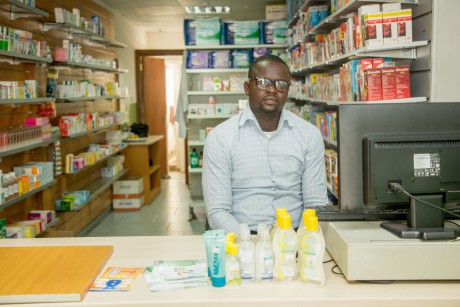
A few blocks north, in the pharmacy of the Ramona Clinic, Leslie Addoquaye agrees that anti-malarial drugs are the most requested, although, unlike Noy, does acknowledge having met some customers with problems to pay them. “Most people have a card of the National Health System, when they come to the pharmacy, some of the prices are higher than the quantity covered by the system, so they have to add some money. But if you do not use the card and you have to pay in full, it can be very expensive”, explains Addoquaye.
As for counterfeits, the chemist replies: “Oh yes, but I do not think they are sold in pharmacies as much as on the street, there are people who carry them in bags and sell them in some street markets”.
In 2003, former president John Kufuor established the National Health Insurance Scheme or NHIS, a social security system designed to facilitate public access to essential medicines for malaria, diabetes, asthma or hypertension. In the months of the development of the new program, the Ministry of Health conducted a study on drug prices in Ghana, with the support from WHO and the Dutch organization Health Action International (HAI).
The results of the study indicated that paying the recommended anti-malarial drugs - artesunate and amiodiaquina pills - required between 2 and 6 days of salary of the lowest-paid unskilled government worker, depending on whether the buyer opted for the cheaper generic or a brand-specific treatment. At that time, this salary was 9.35 cedis a day, about two euros at the exchange rate, but still more than what the half of the population of Ghana earned in 2004.

“We helped the ministry to do this study and found that the prices were much higher than the international reference price, between 30 and 300% higher,” recalls Edith Andrews Annan, current WHO Country Adviser for Essential Medicines Policy, from her small office in the building of the organization. “At that time we thought that when the NHIS was brought into play it would control the price of medicines. But Social Security did not have an appropriate way to determine prices, they simply did a market survey and found the median price, and that does not really controls market prices. People cannot afford to buy medicines because prices are too high, no doubt about it.”
Among the essential medicines analyzed by Medicamentalia, the most noteworthy for their high price in Ghana are antibiotics like ciprofloxacin, antidepressants like amitriptyline, or anti-inflammatory drugs such as diclofenac. Most striking is that, in many cases, there is no difference between the retail price, which is paid with a prescription, and the private one. “Most of the drugs we use in Ghana are imported, only 30% are manufactured here. Most come from India, United Kingdom and United States. They are brought by wholesalers who collude to fix prices, so there is no competition”, explains Andrews Annan, who does not play the situation down. “The NHIS, when it started, tried to keep the medicines available, and there was availability, but later the problems with payments to providers grew. Therefore, if you went to the hospital, the medicines had run off, and if there was any, you had to pay them in full.”
The high price and low availability of some drugs rolled out the red carpet for the entrance of fakes. And not only in Ghana; the data handled by WHO estimate that global trade in counterfeit medicines has tripled between 2000 and 2013, constituting a market of 371,000 million euros. In 2010, this organization and the United States Pharmacopoeia (USP), a non-profit organization funded by USAID (the US Agency for International Development), conducted a study on anti-malarial and tuberculosis drugs to check the extent of the problem. In East Africa the results were satisfactory, and in countries like Kenya or Tanzania only a few drugs did not pass the tests. However, the plague was moving westwards. In Cameroon, half of the audited drugs proved to be false or sub-standard; in Ghana and Nigeria, they accounted for more than 60%.
People cannot afford medicines because prices are too high, no doubt about it.
The percentages of evaluations conducted in Ghana varied greatly, but all results offered were alarming. In a 2008 study held in Kumasi, in the center of the country, of 17 boxes of artesunate - another anti-malarial drug - purchased by researchers, 14 did not contain what they promised. “Especially in rural areas, where there are not many pharmacies, people are selling drugs in bags. On market days, people put these antibiotics in the sun, and those without access to medicines go and buy them,” says Andrews Annan.
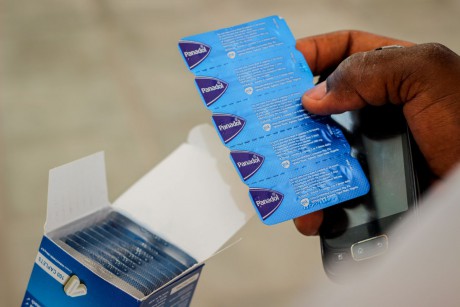
In 2011, police officers in the coastal city of Takoradi, in the southwest, arrested a man named Daniel Taku for selling counterfeit medicines against hemorrhoids. After opening the capsules, authorities found a mixture of sand and sawdust; however, this is not common, as they are usually filled with starch, talc, chalk or flour. Interestingly, what initially led to the arrest of Taku were not the capsules, but an equally fake consignment of Borges olive oil.
Even in the capital, where pharmacies are not rare, this happens. Agyekum points out that “one day I was in a bus terminal and saw a guy selling malaria pills and other medications. I thought ‘wow, here in Accra?’ You can also get medicine in a market. I would not buy from that kind of people, I think that most of us go to pharmacies, but I’ve seen others buying and selling.”
Low tech / High tech
How to distinguish the genuine from the fake?
A lone rooster passes in front of the new headquarters of mPedigree, a three-storey townhouse on a residential street in North Dzorwulu, where the rainforest begins to finds its way between the buildings. The area mainly consists of the Fiesta Royale hotel, government agencies, homes for soldiers, embassies and international organizations.
mPedigree took its first steps in 2007 when its founder, a young man named Bright Simmons, returned to his native country from England - where he studied Astrophysics - looking for partners. Simmons wanted to incorporate a coding system to organic food, in order to certify its traceability from anywhere in the world by simply sending an SMS. In those days, a fake Coartem tablets scandal was uncovered (Coartem is a popular anti-malarial drug produced by the Swiss pharmaceutical company Novartis). The counterfeits were almost perfect, so given that it was impossible to distinguish the authentic from the false ones, the authorities decided to recall from the shelves all the boxes with suspicious serial numbers.
“So we wondered what would be the best way to distinguish the original from the fake,” says Selorm Branttie, economist and director of strategy in mPedigree.
Selorm Branttie, at the headquarters of the technological startup mPedigree. | Photo: Joseph Akwasi. Video: Elio Stamm and Miguel Á. Gavilanes
mPedigree adapted the system, developed for organic food, to medicines. A scratch-off code sent by SMS to the number 1393 returns an answer: True or False - a technologically simple approach to take advantage of the growing use of mobile phones in Africa. The idea caught on mainly in 2008 when the NAFDAC, the regulatory authority of Nigeria - a country of 180 million people - became interested in the concept. Within two years, they passed a directive to ensure that most of the medicines that were being counterfeited, mainly anti-malarial drugs, incorporate this code system, branded as GoldKeys. Today, it has a penetration of 70 %, that is, seven out of ten brands of anti-malarial drugs use this technology. Apart from Nigeria and Ghana, they are now in Kenya, Rwanda, Zambia, Tanzania and Sierra Leone. The next target is India, hence the forced change to bigger headquarters.
The company is defined as self-funded, something almost unheard of in a technology startup. “We have never had venture capital investments or anything like that,” says Branttie. “However, between 2010 and 2014 we received many innovation awards, including some scholarships and other partnerships with companies such as HP or Nokia”. In 2011 the company received its greatest support through winning an international competition called Global Security Challenge, that secured a $ 200,000 grant provided by the U.S. Department of Defense. “We were the first company in the Southern Hemisphere to win,” says Branttie proudly.
Until mPedigree stepped in, the counterfeits control was left in the hands of customs authorities which, in these countries, are not always able to cope with the situation. This new system introduced the consumer into detecting counterfeits drugs, identical to the original and indistinguishable to the naked eye.
“The main problem for manufacturers is that, if you change any detail on the package of the original product, since the printing is the cheapest part of the process of counterfeiting, you will not achieve anything,” reflects Branttie. “In fact, in some cases, counterfeiters print them better than the original manufacturer. Why? Because the manufacturer spends more money on research, product development, quality standards, regulatory activity or logistics. But what do counterfeiters do? They only spend money in printing, distribution and paying bribes along the way.”
The counterfeiters only spend money in printing, distribution and paying bribes along the way
In 2009, a citizen’s report to authorities led to the seizure of two lots of fake Coartem. Since it was not possible at that time in Ghana to obtain a blister of Coartem with guarantee of authenticity, the researchers had to acquire a sample in Kenya to compare it with the counterfeits. At first glance, the only difference between the two boxes was in a small inscription: “Unter 30° lagem”, in German - store below 30° - that counterfeiters had written “lagern”.
A more thorough analysis brought to light other differences, mainly in its composition. The excipient was either starch, or starch with talc. The pills lacked active ingredients such as artemether or lumefantrine, as announced the package, but it contained pyrimethamine, other anti-malarial drug, in different quantities from 6.2 to 25 milligrams. This, according to the experts consulted, is worse than counterfeiting, as exposing the malaria protozoa to a minor amount of a substance designed to kill it could help the protozoa to develop resistance. mPedigree assumes that counterfeits are the most responsible for the failure to eradicate malaria in many areas. “Of course,” says Branttie. “In the 80s, chloroquine was the prescription anti-malarial drug, and was replaced by artemether-lumefantrine or artemether-amodiquine precisely because mosquitoes had become resistant to chloroquine or quinine, used for over 40 years.” Therefore, if counterfeiters continue to bring sub-standard or fake versions of the drugs, in a few years Plasmodium may become immune. “It will behave like a superbug, as it happens already with some antibiotics.”
Finally, an analysis of the pollen contained in fake Coartem certified that its origin was Southeast Asia. “To get into Africa, they choose an entry point where they find it easier, for example, to bribe a customs officer,” explains the mPedigree economist. “They go to neighboring countries like Togo and Benin, even Nigeria, but it is more common in francophone countries, where borders are more porous because they lack solid regulatory systems. The most complex part is that customs authorities, basically, seek profits, and the more they import, the more they earn. Therefore, they do not usually pay much attention to what is entering the country. And once they enter, it’s a matter of time until it reaches other countries by road, by poorly controlled border areas. When it is inside, it is inside.”




